Recent News
Zoological Society To Host “Reef Watch” EventWednesday, May 27, 2015
Polar explorer and environmentalist, Robert Swan OBE, once said: “The greatest threat to our planet is the belief that someone else will save it.”
Francis Patton overjoyed with BZS link-up
Wednesday, May 13, 2015
Teachers at Francis Patton are celebrating as they have received some very positive science results after tests sat by their Primary 6 students.
In the land of the lemur
Tuesday, May 12, 2015
Lemurs look cute and fuzzy but being an expert on them is no picnic. Travis Steffens has trekked for miles across hostile terrain in blazing temperatures to find them.
New Tawny Frogmouth Chicks At BAMZ
Friday, May 08, 2015
The Bermuda Aquarium, Museum and Zoo is now playing host to two new inhabitants, a pair of tawny frogmouth chicks born approximately one month ago to parents Kermit and Duane, inhabitants of the Australasia exhibit.
Zoological Society puts accent on history
Monday, April 27, 2015
“Educating tomorrow’s environmentalists,” is the mission of the Bermuda Zoological Society, and while impassioning and empowering students to protect and conserve the environment is important, it is equally important to the BZS to educate adults — especially those who are teaching the next generation. We desire to provide them with the understanding and skills to help them set an example of how to make a difference for our natural world
About
GovernanceAbout Us
Newsletter
Latest News
Gift & Bookstore
Contact
General Inquiries
info@bzs.bm
Latest News
All the latest updates and news from the Bermuda Aquarium, Museum, and Zoo, one of Bermuda's leading visitor attractions!
Owain Johnston-Barnes
Published Oct 25, 2017 at 8:00 am (Updated Oct 25, 2017 at 7:38 am)
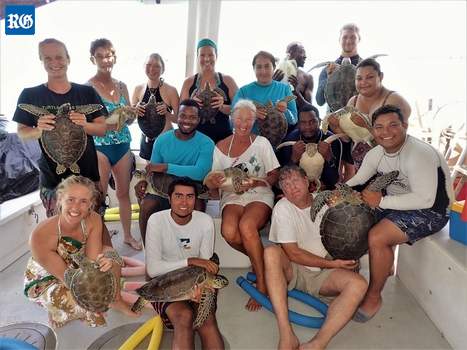
Shelling out: the Bermuda Turtle Project 2017’s
international course participants
Almost 200 turtles were plucked from the island’s waters this August as the Bermuda Turtle Project continued its conservation work.
While fewer turtles were found at offshore sites, the number of small turtles found closer to shore have risen.
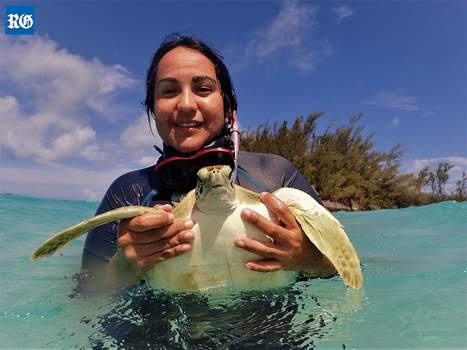
A fine specimen: Sandra Gallegos, from Mexico,
captures a healthy green turtle
A spokesperson for BTP said: “Following hatching on the nesting beach, sea turtles spend a few years out in the open ocean before moving into coastal habitats such as Bermuda.
“The increase in small turtles is not unexpected given the increase in the major nesting populations known to contribute to the green turtle aggregation in Bermuda. The organisation added that nesting populations in Costa Rica, Florida and Mexico have all grown thanks to conservation efforts.
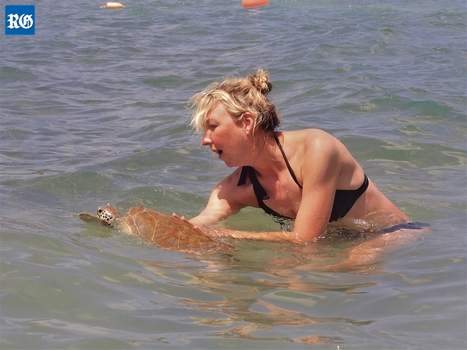
Gently does it: Abigail Alldis, a Bermuda participant,
gently releases a green turtle
BTP was first launched in 1968 to learn more about Bermuda’s turtles.
This year, volunteers and organisers visited 14 sites over a two-week period in August, catching and releasing 194 green turtles.
While fewer turtles and seagrass were found in areas like Fort St Catherine and Grotto Bay, other areas including Bailey’s Bay and Somerset Long Bay continued to be rich with turtles.
The spokesperson added: “Among the capture were 68 turtles that had been previously tagged, most in the same site as their original capture. One had a 12-year BTP history.”
The organisation said that the number of turtles in Bermuda has not changed significantly in recent years, their distribution has.
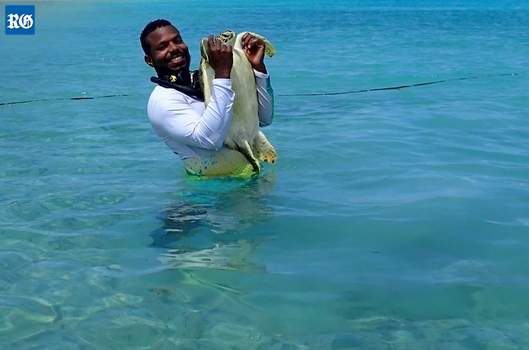
Gotcha! Damany Calder, from Jamaica,
captures a green turtle in the shallows
The spokesperson said: “With most boating activity and observations by the community taking place near shore, it makes sense that we perceive there are more turtles, but so far it just looks like they are all moving closer to shore.”
The team also performed 17 necropsies, examining dead turtles to find out what killed them.
While the results were “not out of the ordinary”, more turtles appeared to have been hit by boats than in previous years.
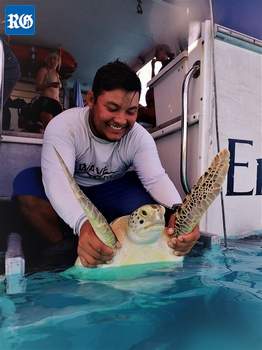
“This could well be because there were more boats out on the water in 2017 and our sea turtle hotline was promoted island- wide,” the organisation said.
“Six of the animal necropsies had propeller or blunt trauma scars indicative of boat strikes.
“Two died because of entanglement in monofilament fishing line and for the remainder we were not able to conclusively identify the cause of death. Unless the animals are fresh dead when they are examined, it is challenging to determine the cause of death.”
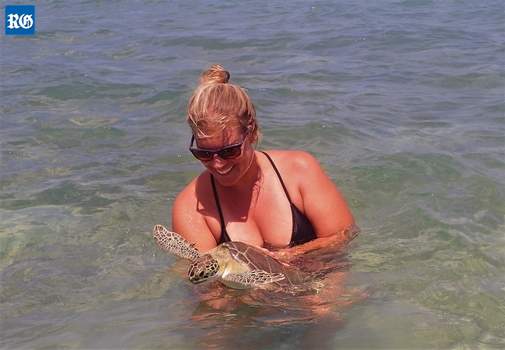
This year, the BTP was assisted by environmental officers and biologists from Jamaica, Mexico, Guatemala, Anguilla, Costa Rica and the Turks and Caicos, along with two candidates from Bermuda.
Through the course, they were able to practise a number of research methods, discuss scientific papers, attend lectures and deploy a satellite transmitter.


